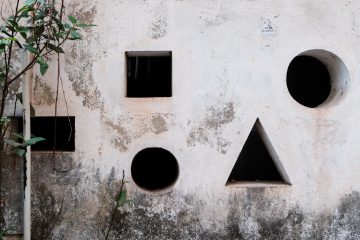In this poem, the plodding passage of an old-fashioned wooden ferry, as it’s moving across Sydney Harbour, late at night, is conveyed through the expressive use of a seemingly-arbitrary four-line stanza (or ‘quatrain’). This stanza is used to break open a sentence and spread it across a verse-space, like a vista, or it can slow down, with its tight lines, the progress of the description.
The tactics of other art-forms are drawn on here. In the first stanza, we read that the ferry ‘goes up onto/ the huge dark harbour,’ which is reminiscent of the way, in a naive or ‘primitive’ painting, things are often shown as distant by being depicted higher up on the painting’s surface. This ‘innocence’ permeates the poem. There is also a cinematic technique in ‘Late Ferry’– the boat’s fairly brief journey is given in a series of filmic ‘takes’, cut and montaged together, as in the editing of a film.
The poem is seen from the foreshores of Sydney Harbour, at Lavender Bay, a little ‘upstream’ from the Harbour Bridge and Luna Park. The ferry is moving diagonally across the Harbour, into the light of the city and Circular Quay. This is the viewpoint of many paintings, set in daylight, by the artist Brett Whiteley.
The poem speaks of a ‘tuberous// shaped bay’, meaning a bay that is like a socket (in the shoreline of the Harbour) from which a tuber, a potato, has been pulled. Plain nature, in which the artist has to make his stand, is not always as glamorous as it ends up being in his depiction of it.
The poem also speaks of the Harbour Bridge as lit-up, its lights ‘swarming’ on the water below, and of the water as spangled like a ‘Busby Berkeley spectacular’. At the time the poem was written, the Bridge was fully lit at night, but that is no longer done. Busby Berkeley was a Hollywood film director who boasted ‘a cast of thousands’ in his all-girl chorus line-ups, his tap-dancing black and white films, like ‘Gold Diggers of 1933’ and ‘Babes on Broadway’ (1941).
The ending of the poem depends on a pun. The last line, ‘filled as it is with its yellow light,’ means the windows of the ferry are filled with their old-fashioned, warm light, as the cells of a honeycomb are filled with honey, and it also means that the speaker is himself filled with this light – with a visual pleasure that is like sweetness. (Such an image is called synaesthesia, the combining of the experience of one sense with that of another – as, for instance, in our literally experiencing a sound as green, which some people are naturally able to do.)

0 Comments